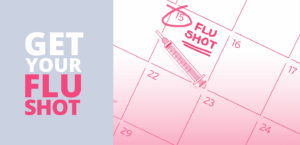Infertility Glossary for Beginners
“Before you start, RTC on D3 for your TVUS and baseline labs.”
Did you just reread that three times? Let me translate:
“Before you start, return to the clinic on day three of your menstrual cycle for your transvaginal ultrasound and bloodwork.”
When you begin your fertility journey, it might seem like the doctors and nurses are speaking another language. And that’s because they pretty much are. But don’t worry, your friendly REI is here to break down the most common terms used to help you understand what in the world your doctor, nurses, and friends are talking about. I compiled the beginners’ ABCs of infertility. These aren’t all the terms, but it is a great starting point!
The ABCs Of Infertility
A is for Anti-Mullerian Hormone (AMH) – a marker of ovarian reserve
B is for Beta HCG – the pregnancy hormone
C is for Clomid – a medication used in a patient who do not ovulate on their own or to increase the number of eggs produced
D is for Day 3 (D3) – the third day of your cycle, blood work is performed on this day to determine your ovarian function
E is for Embryo Transfer (ET) – the process of placing the embryo into the uterus
F is for Fertilization – the combining of the genetic material carried by sperm and egg to create an embryo
G is for Gestational Carrier – a person who carries and delivers a child for a couple or individual
H is for Hysterosalpingography (HSG) – an X-ray test to outline the internal shape of the uterus and show whether the fallopian tubes are blocked
I is for Intrauterine Insemination (IUI) – a procedure in which sperm is placed directly into the uterus using a small catheter
J is for Justify – there is absolutely no need to justify the choices you make in your fertility journey to others
K is for Klara – our online texting platform used to communicate with you and to conduct telemedicine appointments
L is for Letrozole – a medication used in a patient who does not ovulate on their own or to increase the number of eggs produced
M is for Male Factor Infertility – the cause of infertility in approximately 40% of heterosexual couples
N is for Normal Menstrual cycle – a menstrual flow that occurs every 21 to 35 days and lasts two to seven days
O is for Ovulation – the release of an egg from your ovary
P is for Preimplantation Genetic Testing (PGT) – a procedure used to identify genetic abnormalities in embryos
Q is for Quality – embryo quality refers to how the cells in the embryos look based on visual inspection and video recordings
R is for Recurrent Pregnancy Loss (RPL) – defined as two or more failed pregnancies suggesting evaluation for the cause
S is for Semen Analysis (SA) – which measures the quantity and quality of a semen sample
U is for Ubiquinol (Coenzyme Q10) – a supplement often recommended for patients with a decreased number of eggs to improve outcomes
V is for Varicocele – an enlargement of the veins within the scrotum
W is for Window of Implantation – the span of a few days in which your uterus is at its most optimal state to receive an embryo for implantation
X is for X Chromosome – one of the two sex chromosomes in humans
Y is for Y Chromosome – one of the two sex chromosomes in humans
Z is for ZyMot – a device that can be used in the IVF laboratory to prepare and select sperm for insemination by intracytoplasmic sperm injection (ICSI)
Now that you have the basics, you are ready to continue to learn the language. As always, if you have any questions speak with your team or make an appointment with me so we can start to discuss your options. (I promise to help translate!). I can be reached by filling out our contact form or by calling 732.943.7169
Barry Perlman, DO earned his medical degree from Rowan University as the valedictorian of the class of 2014. He graduated from Lehigh University with a degree in Molecular Biology. Dr. Perlman completed his residency in Obstetrics and Gynecology at Rutgers New Jersey Medical School. Following his time as Chief Resident, Dr. Perlman finished his fellowship in Reproductive Endocrinology and Infertility at Rutgers-New Jersey Medical School. He is an attending physician in the Department of Obstetrics and Gynecology at Saint Barnabas Medical Center.
A keener and looking for more terms. Check out below for an expanded glossary of key terms:
Antral Follicle Count (AFC) – the number of small follicles we see on an ultrasound which are a marker of egg quantity
Aneuploidy – refers to a condition in which an abnormal number of chromosomes are found in an embryo or pregnancy
Anovulation – a condition in which the ovary does not release a mature egg regularly
Assisted Reproductive Technology (ART) – advanced technology & treatments used to assist you in getting pregnant. This includes procedures like IVF and IUI.
Basal Body Temperature (BBT) – a fertility awareness method where you track your temperature every single day waiting to see a change indicating ovulation
Blastocyst – the stage of embryo development that occurs around 5 days after fertilization
Cervical Mucus Monitoring – a fertility awareness method where changes noted can help track your ovulation
Day 1 (D1) – the first day of full flow of your menstrual cycle
Diminished Ovarian Reserve (DOR) – a condition in which the ovary loses its normal reproductive potential, compromising fertility
Donor Eggs – eggs from another woman that you use to get pregnant
Egg Freezing – the process of preserving your eggs
Egg Retrieval – when we surgically collect the eggs out of your body during an IVF cycle
Embryo – the early stage of development of a multicellular organism
Endometrial Biopsy (EMB) – a procedure that involves taking a tissue sample of the lining of the uterus
Endometrial Receptivity Analysis (ERA) – a genetic test that takes a small sample of a woman’s endometrial lining to help determine which day would be the best day to transfer an embryo
Estradiol (E2) – estrogen that is made from the ovaries
Fertilization – the combining of the genetic material carried by sperm and egg to create an embryo
Frozen Embryo Transfer (FET) – the process of placing the embryo that was previously frozen and thawed into the uterus
Follicle – A group of cells forming a cavity in the ovary where the egg grows before it’s released during ovulation
Follicle-Stimulating Hormone (FSH) – a hormone produced by the brain and measured in the blood during your cycle. It communicates to the ovary that it’s time to grow an egg
Follistim – an injectable medication used to stimulate the ovary for egg development
Ganirelix – an injectable medication used to prevent premature ovulation when undergoing infertility treatment
Intracytoplasmic Sperm Injection (ICSI) – a process during in vitro fertilization in which a single sperm is injected into a mature egg
In Vitro Fertilization (IVF)– a process of fertilization where an egg is combined with sperm outside the body
Last Menstrual Period (LMP) – The first day of your period
Luteinizing Hormone (LH) – a hormone produced by the brain and measured in the blood during your cycle.
Menopur – an injectable medication used to stimulate the ovary for egg development
Ovulation Predictor Kits (OPK) – a fertility awareness method where you use your urine to monitor for an LH surge
Ovarian Hyperstimulation Syndrome (OHSS) – an exaggerated response to excess hormones that cause the ovaries to swell and become painful
Progesterone (P4) – Progesterone is a hormone that plays an important role in the menstrual cycle and in maintaining the early stages of pregnancy
Progesterone In Oil (PIO) – an injectable medication used to protect the embryo and secure its healthy growth and development
Saline Infused Sonogram (SIS) – a transvaginal ultrasound test that is performed while a sterile saline solution is gently infused into the uterus. The procedure detects uterine abnormalities such as endometrial polyps, fibroids, or uterine scars



 Blog
Blog
 0
0 





